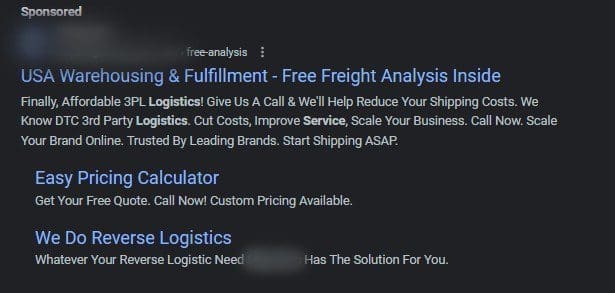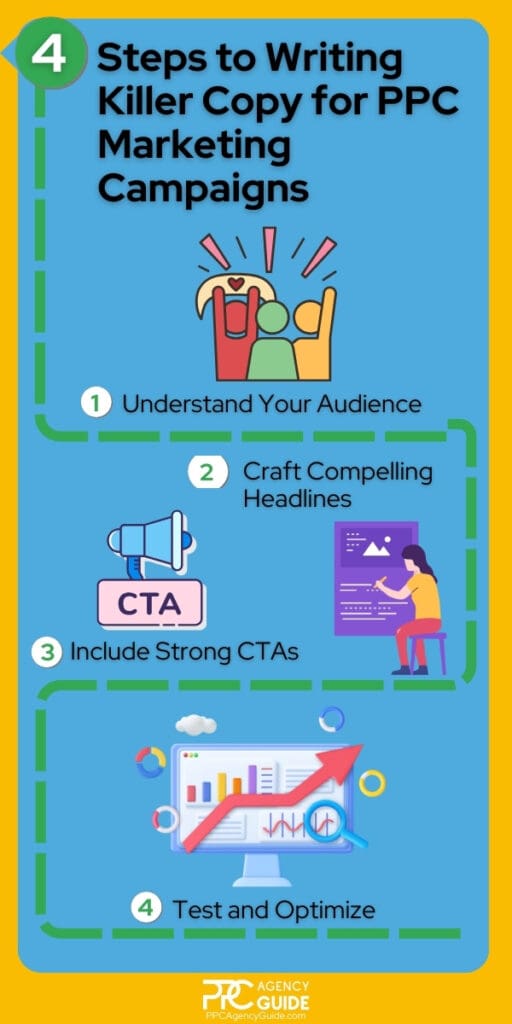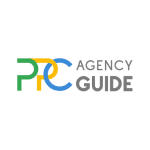
Perfecting your ad copy, or the copywriting included in your pay-per-click advertising, is one of the most important things you can do to strengthen your PPC marketing campaigns. Below, we’ll walk you through best practices for writing PPC copy and show you real pay-per-click ads that master and miss these techniques so it’s easier to get results like a PPC agency does.
What to Do Before You Start Writing Your Pay-Per-Click Ad
Pay-per-click management companies prep their writers with a brief outlining everything they need to know to create compelling copy for each campaign. If you’re going it alone, you may not need to create a full brief, but you should familiarize yourself with a few things before you begin to put yourself in the right frame of mind and ensure you have everything you need.
Familiarize Yourself with the Audience
Confirm which audience your PPC marketing campaign is targeting and match it up with one of your buyer personas, if possible. Make a note of:
- What they value. Your ad copy should highlight what matters to them rather than product or service features.
- How they speak. The more you sound like them, the more likely your message is to resonate with them.
- What will stop them from taking action. You can often address their concerns in your ad copy to help move them to the next step.
Gather Keywords
Including keywords can help your ad display more and get preferred placement, plus it makes it more likely to resonate with readers and get clicked. If you’re running search ads, you can use special pay-per-click software or tools native to your ad platform to identify ideal keywords. These should be grouped into categories with similar terms, and your ads should be designed for these distinct categories. For instance, if you’re in the B2B financial services industry, you might have one category dedicated to equipment loans, another dedicated to payroll loans, and so forth.
Check Out Competitors
Have a look around the net for ads placed by your competitors. Start by running searches for your intended keywords to see what comes up. If your competitors are working with a good pay-per-click agency or in-house team, you may also be able to trigger their remarketing and retargeting ads by visiting their website or social media properties.
Bear in mind that their use of any given strategy or ad copy does not mean that it’s effective. However, if something resonates with you or you see the same approach leveraged over time, you can try using it as inspiration for your campaigns.
Also, evaluate their ads for any gaps. If competitors are missing things in their ads, you may be able to make yours stand out more by addressing the gap.
Know Your Platforms
All pay-per-click sites or platforms have unique guidelines for copy. It’s up to you to make the most of the space you have. For instance, Google’s responsive search ads allow up to 30 characters in each headline and 90 characters in each description. The same counts apply to Microsoft ads. On the other hand, Facebook ads are a bit more generous, allowing up to 40 characters in a headline, 30 characters in a description, and 125 characters in the primary text.
Check the official guidelines for any PPC advertising services you plan to use and make a note of any requirements. While some people swear that drafting ad copy by hand is the best way to get creative juices flowing, it’s often easier to draft in a word processing program or spreadsheet because they can tally your characters for you.
Plan Assets Ahead of Time
The ad copy may be what gets a person to click, but it’s not enough to get them to convert alone. Messaging and design elements must be consistent across the entire experience to nudge them over the finish line. Because of this, it’s helpful to create a list of all assets that will be used for your PPC marketing campaign, including the ad copy, landing page, graphics, and forms, so that you can create everything at once.
Use AI Mindfully
Artificial intelligence is the buzz phrase of the modern era. Still, at this stage, it won’t create the quality copy that a pay-per-click agency or professional copywriter will all by itself. If you decide to use AI for your ad creation, leverage it as a creative aid only. Use it to get ideas for copy, then refine the wording and ensure the ad copy conveys everything you need it to on your own.
Be Prepared to Craft Extra Variants
If you’re working with a pay-per-click advertising agency, you may not realize it, but many ads are left on the cutting room floor. Always create more variants of your ad than you will actually use. For instance, you may want to create twice as many if you’re just starting out.
If you’re unsure which ones are best, share your ad copy with others and get feedback. You’ll also want to hold onto a few variants for A/B testing later.
What to Do While Drafting Your PPC Ad
Now that we’ve covered some tactics PPC management firms leverage before kicking off a campaign to ensure PPC marketing campaigns are effective, let’s explore how to create high-performing ad copy.
Let’s look at some examples of PPC search ads for logistics services. Which one would you click if you needed to ship a full truckload of goods? They’re all logistics companies offering similar services, but certain ads stand out more than others. Can you pinpoint why?

Don’t worry if you’re not sure what the difference is yet. We’ll pick apart this example as we review best practices for PPC ad copy below.
Focus on the Solution
People new to writing PPC ads tend to focus only on the product or its features. That’s somewhat helpful, but it doesn’t really speak to the reader’s problem. We can see this is the approach the third and fourth ads took. We know what they’re doing and who’s doing the job, but we don’t know the unique benefits these companies offer. You probably had no desire to click either of these choices.
The second does a slightly better job by noting that they make shipping transparent and reliable. It’s a decent contender. However, only the first builds upon reliability and transparency by providing a unique benefit: “Access our network 24/7/365.” Odds are, this is the one you wanted to click because of this.
Eliminate Objections
Your readers are always going to have some hesitations about moving forward. Unfortunately, many businesses wait until the reader reaches a landing page to address this. Start breaking down barriers in the ad copy to increase your pay-per-clicks. Evaluate whether your ads effectively tackle objections with the help of our PPC Audit Guide.
We can use the previous ad examples again to see this concept in action. As customers, we’re probably most concerned about ensuring our products arrive when they should and having some visibility into the shipping process. Yet again, the first and second ads master this technique by discussing reliability and tracking.
The third one makes a fair attempt by offering social proof and giving the nod to the trust it built with 7,000 customers. This is a good choice for the customer wondering, “Why should I trust you?” However, it’s displaced here. Those claims fit better for the reader who clicks and wants to learn more.
The fourth ad only leaves us with more questions: “Some Of The Best & Most Motivated Truck Drivers.” How does this help us? What problem does a motivated truck driver solve for us? It doesn’t really have any meaning, so it doesn’t encourage many clicks at all.
Have a CTA
Always tell the reader what to do next. This is referred to as a call-to-action, or CTA for short. In our examples, we see phrases like “Book your load today” and “Create Shipper Account.” These are good, considering the minimal space PPC ads allow. However, it’s better to include a benefit or objection-breaker in your CTA whenever possible. For instance, “Create free account” might perform better than “Create shipper account.”
Maximize Clicks with Assets
Assets are pieces of content that accompany your ad. Each asset your business includes in PPC marketing campaigns boosts clicks by ten to 15 percent, according to Google, so it’s worth the extra effort to include them. However, there are a few caveats to this. First, you should only include assets that are relevant to your business. Secondly, any assets you select must align with the ad. Let’s take a quick look at how this works in practice.
Graphics
We can see the first two PPC ads in our example have images. The photos help those listings stand out and bring your eyes to them. A good pay-per-click management company will include these for you. If you’re choosing your own graphics, use images unique to your company to convey authenticity. For instance, you may want to show customers using your product or service, your team, or your physical business rather than the stock photos in the sample.
Sitelinks

Advertisers see a 20 percent increase in clicks when they add four sitelinks, according to Google. These help the reader find the right page on your website and should include compelling CTAs. In the image above, “Easy Pricing Calculator” and “We do Reverse Logistics” are sitelinks. These are a good start, but this advertiser probably misses out on clicks because the first sitelink is unclear. Is the link taking us to a calculator tool or a quote request form? Furthermore, the second link is focused on the company, not the customer. It’s probably not getting many clicks, either.
Site links can also display without the description. We see them in the image below in the line of blue text at the end that begins with “Air Freight.”

Additional Assets
In addition to the asset types already covered, you may also want to experiment with callouts, structured snippets, call assets, lead form assets, and more. Again, most of these must be written, and they should flow with your ad copy, so it’s best to write them when you create your ads or at least confirm which assets are selected before launching a campaign.
Weave in “Click-Boosters”
Certain words and phrases can create an emotional connection in the reader’s mind, increasing the chances they’ll click your ad. Use these throughout your ad copy, CTAs, and landing pages whenever possible.
Keywords
People like a consistent experience, so using the person’s query in your copy can increase the odds they’ll click. It also boosts the quality score of your ad, so it’s more likely to be displayed. Think back to the initial example in which the first two ads were effective and the second two weren’t. Google likely selected the second two to display because they contained the phrase “logistics services,” which matched the search query.
You
Address your audience with words like “you” and “your.” It feels more personal and can increase clicks. We saw this approach in the initial two ads with phrases like “ship your full truckload.”
Power Words
Words like “effortlessly,” “success,” and “brilliant” create an emotional response and subconsciously hook the reader into wanting to learn more. The third ad in our example leveraged this approach by including the word “trust.”
Statistics
Statistics give an air of credibility, provided the figures are authentic. Two of the sample ads attempted this approach by using phrases like “50% Faster Shipping” and “More Than 7,000+ Businesses…” However, because the figures are rounded, they don’t seem authentic. If you caught this while you were reading, those businesses probably lost credibility in your eyes and returned your focus to the first option.
Numbers
Numbers rarely get used in copy, so brains tend to fixate on them when they’re included. The first advertiser used this approach appropriately with “24/7/365.” Prices, percentages, dates, and more can all have a similar effect.
How to Perfect Your PPC Ad
If you’re trying to get results like pay-per-click companies do, keep optimizing your PPC marketing campaigns to improve the results.
A/B Test
A/B testing is a technique that a pay-per-click advertising firm will use to ensure you always get the best results from your ads. It involves making a small change to an existing version of one of your ads or landing pages and running it against the original to see which performs best. For instance, you might start by changing a headline or even a single word on the headline. Next, you might test a different offer or CTA. When a test version wins, it usually takes the place of the original and is used instead.
Monitor the Results
Keep track of which ads perform the best. You can use them in future campaigns or inspire your next ad copy round. You can also learn a lot about your audience based on the performance of your ads. For instance, you may be able to tell whether your audience responds to negative framing and takes action to avoid an undesirable consequence or if they prefer positive sentiments. The more you examine the results of your PPC marketing campaigns, the easier it is to spot patterns and craft content they’ll respond to in the future.
Get Help Improving Your PPC Marketing Campaigns
Many people start out thinking that creating PPC marketing campaigns and writing ads is easy. In reality, a lot of effort goes into creating effective campaigns, even when trained professionals at pay-per-click advertising companies craft them. If you don’t have the time to dedicate to your ads or you’re not getting the results you want from them, it’s better to call in an expert. Request a consultation to learn more or get started.



















